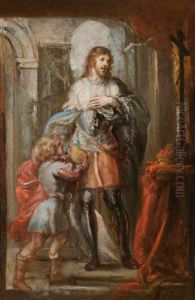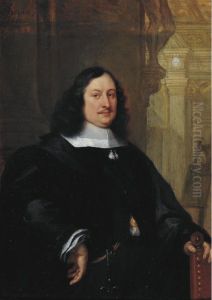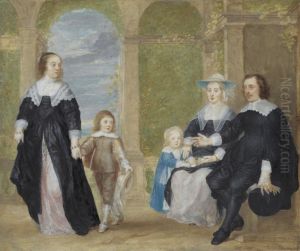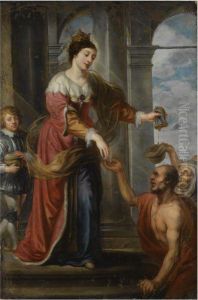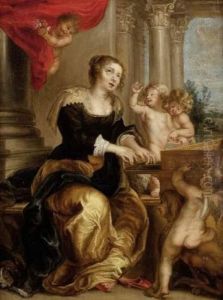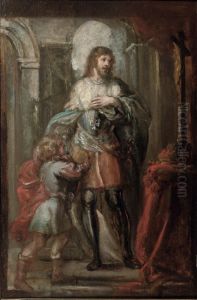Philips Fruytiers Paintings
Philips Fruytiers was a Flemish Baroque painter, draughtsman, and engraver, known for his portrait works and history paintings. Born in Antwerp around 1610, he was a part of the vibrant artistic community in the Southern Netherlands during the 17th century. Although Fruytiers is not as widely recognized as some of his contemporaries, his contributions to Flemish art have been appreciated by art historians and collectors over time.
Fruytiers received his artistic training in the workshop of the prominent Antwerp painter Andries van Eertvelt. His early works were influenced by the dramatic chiaroscuro and dynamic compositions characteristic of the Baroque style. Throughout his career, Fruytiers developed a distinctive approach to portraiture, often depicting his subjects with a certain elegance and refinement.
Despite his talent, there are only a few documented works by Philips Fruytiers, which may be due to the limited number of signed or dated pieces. His portraits are particularly notable for their psychological depth and the vivid representation of fabrics and textures. Fruytiers also produced religious and allegorical paintings, which demonstrate his ability to handle complex compositions and his understanding of contemporary iconography.
The exact details of Philips Fruytiers' life, including his artistic output and influence, remain somewhat obscure. This lack of information is partly due to the fact that he worked during a period when Antwerp's art scene was overshadowed by the success of artists from other regions, such as Rubens and Van Dyck. Fruytiers died in Antwerp in 1666, leaving behind a modest but intriguing body of work that offers insight into the less-celebrated aspects of Flemish Baroque art.
Although Philips Fruytiers may not have achieved the same level of fame as some of his peers, his work is valuable for its reflection of the cultural and aesthetic sensibilities of his time. His portraits, in particular, provide a window into the society and individuals of the 17th-century Southern Netherlands. As research continues and more works are attributed to him, Fruytiers' place in the history of Flemish art may become more pronounced.
